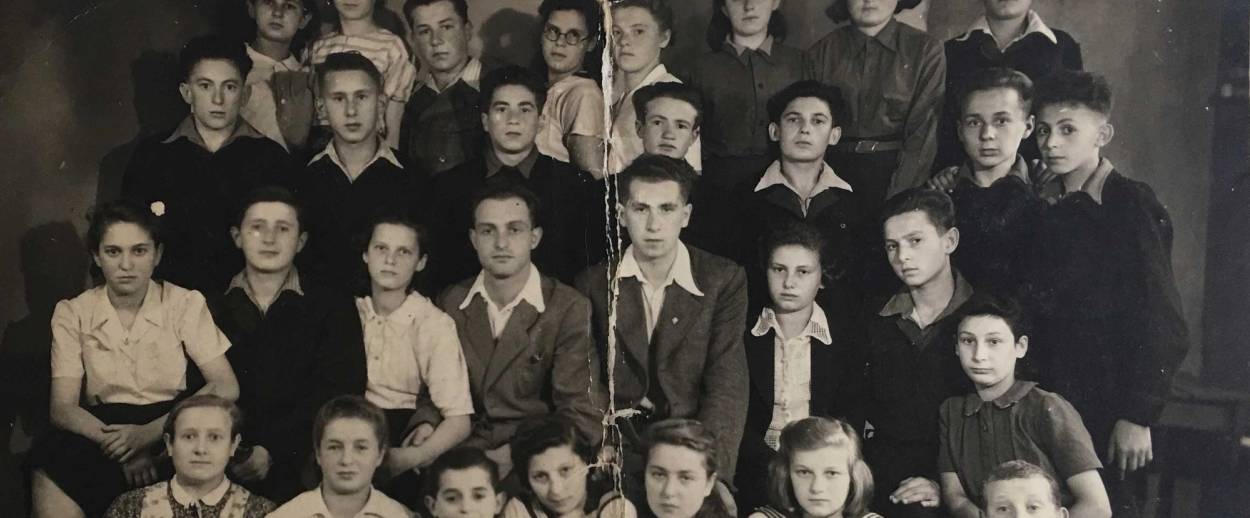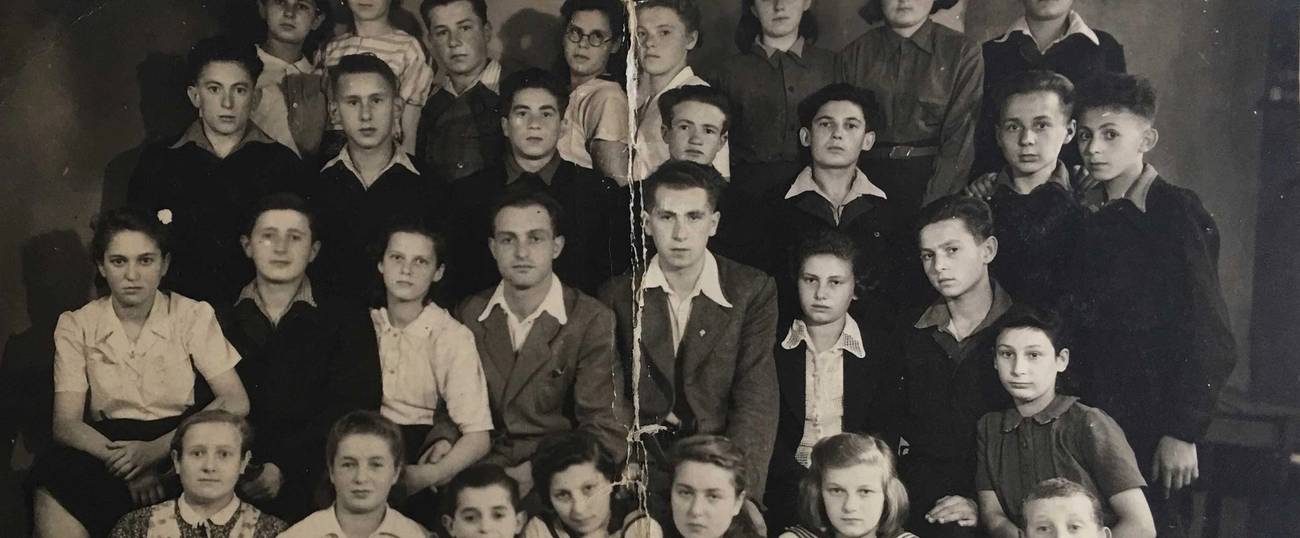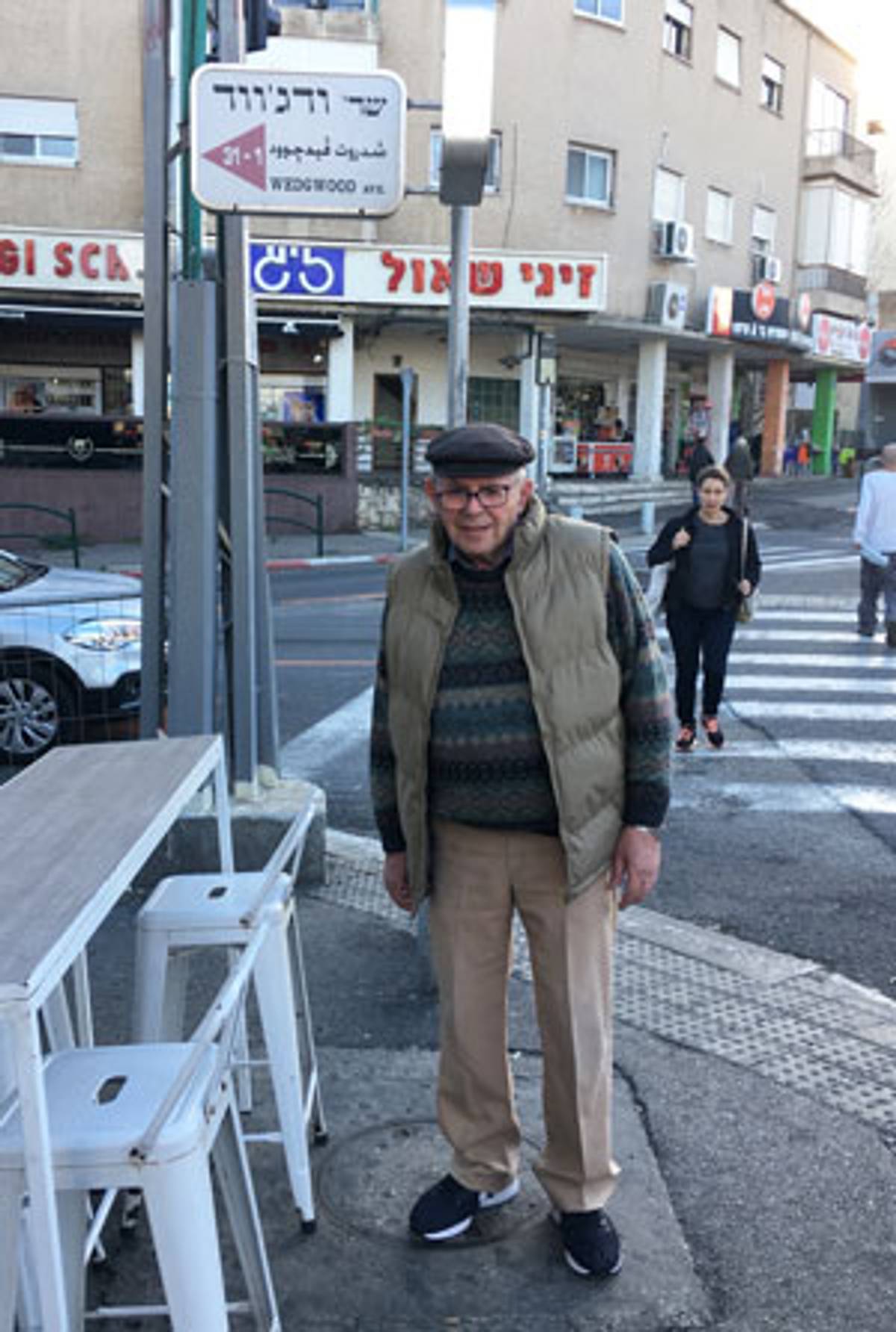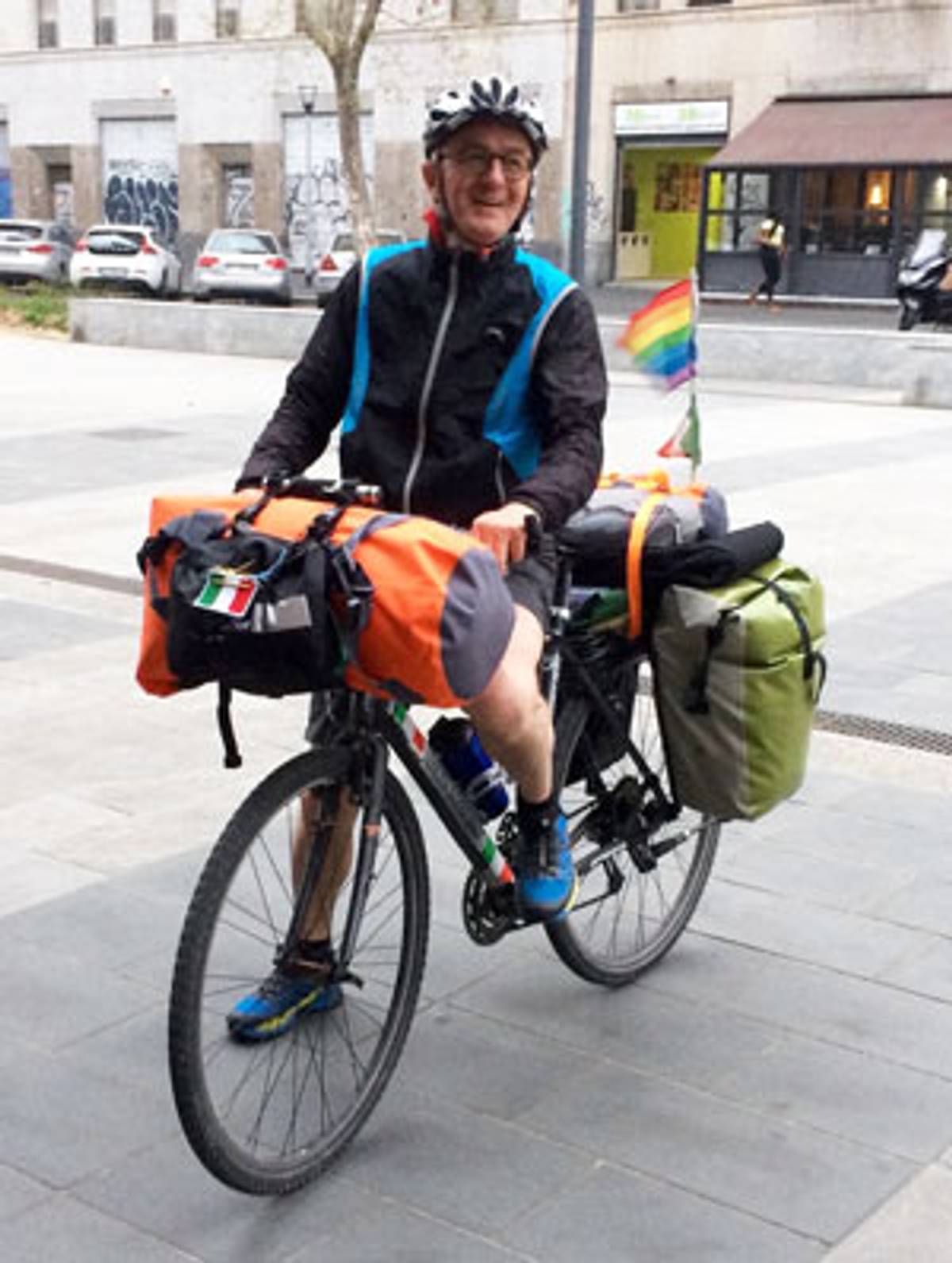Menachem Krigel spent 15 months hiding in a cramped wood store in the home of a Ukrainian peasant who hid him and his mother during World War II. In the weeks after the liberation, as the frontline moved back and forth, they were separated. He has no idea what became of his mother. In his home in Haifa, as he makes coffee in his kitchen, he said recently: “This was for me the moment of trauma. I can never get it out of my mind.”
Orphaned and alone, Krigel was eventually reunited with a cousin and together they traveled to Krakow where they joined a group of survivors intent on making their way to Palestine. They were two of the 100 survivors of the 10,000 Jews who had lived in his Polish hometown of Buczacz, now Buchach in Ukraine.
Krigel became one of the 70,000 Jewish refugees who flooded into Italy after the war. He was cared for in a children’s home in Selvino in the mountains above Bergamo. The home, a former holiday camp that had been built for the children of Italy’s fascist elite, was run by Jewish soldiers from Palestine who had fought in the British army. After the liberation of Milan, the members of the Jewish Brigade and the engineering company Solel Boneh, who had fought in Italy as part of the Allied forces, devoted their energies to helping the survivors rebuild their lives and start a new life in Palestine.
Menachem Krigel near his home in Wedgwood Ave., Haifa, 2018. He sailed on the illegal immigrant boat the Josiah Wedgwood in 1946. (Photo: Rosie Whitehouse)
The hub of the operation was a few minutes’ walk from Milan’s magnificent cathedral at via dell’Unione 5. The grand 16th-century Palazzo Erba Odescalchi, a former billet for fascist militias, was turned into a reception center to help the local Jewish community put their lives back together. It would soon become the pulsating heart of the bricha, the Hebrew name for the mass emigration of Jews from Eastern Europe after the Holocaust, as the address traveled like wildfire along the bricha bush telegraph. Over 35,000 survivors passed through its doors.
Primo Levi, the young chemist who had been in Auschwitz, was a frequent visitor to the repurposed palazzo, and he described it in his novel, If Not Now, When?: “There were men, women, and children encamped in the corridors, families that had built themselves shelters with sheets of plywood or strung-up blankets. … The air was torrid, with odors of latrine and kitchen.”
The imposing Palazzo Erba Odescalchi has four wings surrounding a central courtyard with an arched loggia. The building is marked with an information board that describes in detail the palace’s architecture. Of its place in Jewish history, the text mentions only it was the temporary home of the community’s synagogue until 1951. Few people remember what happened here.
The survivors who arrived in Italy had no intention of staying and the vast majority wanted to start a new life in Palestine. Their hopes rested on Yehuda Arazi, a secret Haganah agent who had been sent by the Jewish Agency to help bring the survivors to Palestine. His headquarters was a secret camp outside the city of Magenta, west of Milan.
The British, who at this point controlled Palestine, had imposed strict immigration controls. The only way to get the thousands of desperate survivors out of Italy was to put them on illegal immigrant ships and try to run the British blockade. This illegal operation was known as Aliyah Bet. Krigel was to sail on one of these ships, the Josiah Wedgwood, and jokes that this was how as a skinny teenager he became “an enemy of the British empire and took on the British navy!”
Elisabetta Bozzi, an enthusiastic activist for the Associazione Nazionale Partigiani d’Italia, the national partisan’s association that campaigns to highlight their role in WWII and the founding of the republic 72 years ago this week, only recently discovered the story of the Arazi house. When I visited with her, she stopped her car outside a run-down piece of land surrounded by a barbed wire fence within which sat a large turreted villa. Today, even though the house is still known as the La Casetta di Ebrei, the Little Jewish House, most of the locals have no idea why.
For three years this building was camp A, the nerve center of Arazi’s operation, where everything that was needed to kit out the 34 ships that sailed from Italy was prepared. “This place was the most top secret place in the Aliyah Bet,” she said, as the breeze rustled the leaves on the trees. From 1945 to 1948, this scrubby deserted garden was covered in military tents and teeming with people.
The story of how thousands of Holocaust survivors were both cared for and then spirited out of Italy on illegal immigrant ships was largely forgotten when it became inconvenient for the pro-Palestinian left in Italy to remember the help that they had given Aliyah Bet to ship people and arms to Palestine. The story of the weapons that were hidden in the fields around the villa is not something the left are yet ready to discuss, but the story of the Jewish refugees and the help they were given is suddenly politically useful. It is a stick with which the left can beat the right, who campaign against the illegal migrants who have flooded into the country in recent years.
The campaign to remind people of the forgotten story of 1945-48 has centered on the village of Selvino, where over 800 of the most vulnerable survivors were cared for. The children had survived the camps and had lived feral in the forests. Today, a small exhibition is the first step in what activists hope will be a larger project to restore the house where the children were cared for and to turn it into a museum of the Aliyah Bet, together with a conference center. To highlight the campaign, Giovanni Bloisi, a wiry man in his early 60s, last year completed an epic 1,466-mile bike ride from his home in Varano Borghi, hard on the Italian side of the border with Switzerland, to Yad Vashem in Jerusalem.
A lifelong left-wing activist, Bloisi, who is not Jewish, was inspired to make this extraordinary trip when he met survivors Avraham Aviel and his late wife, Ayala Lieberman, when they returned to the now-ruined orphanage in Selvino for the first time in 2015. Aviel had survived by hiding in the forests of what is now northern Belarus after his family had all been murdered.
Giovanni Bloisi. (Photo: Rosie Whitehouse)
Bloisi said, “It is vital in this difficult moment in Europe, with nationalism and anti-Semitism on the rise, that we remember what happened.” Referring to the orphans from the Selvino home, he said: “These kids had seen unimaginable horrors but were welcomed in Italy, cared for, and brought back to life.”
Music played a crucial part in this rehabilitation. Krigel recalled he not only sang in a choir but was taken to see the opera at La Scala in Milan. All the children had their photographs taken and given to them, and for many it was the only memento that they brought with them from Europe to Palestine.
One of those who cared for the children was Eugenia Cohen, a young Milanese Jew who during WWII was saved by the Madinina family in Pandino, a small town on the Lombardy plains, after her family was arrested and sent to Bergen-Belsen. The Madinina family never spoke about how they had hidden Cohen; the story was discovered by the local history society. The mayor of Pandino, Maria Luise Polig, recently announced that the city, which is famous for its cheese, will commemorate Cohen’s story in a special exhibition to coincide with Holocaust Remembrance Day on January 27, 2019.
Cohen played a key part in rehabilitating the children of Selvino. At first many were frightened to sleep in beds with sheets and hid bread in their pockets, fearful of where their next meal would come from. The children spoke Yiddish, Polish, Romanian, and Hungarian. Although Cohen could only speak Italian, she recalled in an interview shortly before her death last year that she “spoke to them in kisses, in hugs, and in love.” The children looked upon her as a mother.
Cohen fell in love with one of the Jewish soldiers, Reuven Donath. Their son Nir Donath, who was in Pandino when I was there, said that although his mother had never been a Zionist, like most Italian Jews at the time, she changed her name to Noga, which means Venus in Hebrew. “When my father was discharged from the army he was allowed to take his wife with him home to Palestine,” he said. “She believed it was fate, as when she was 16, a clairvoyant had told her that she would meet a Jew from far away across the sea with whom she would fall in love. It was written in the stars.”
Mayor Polig, a member of the left-wing party Partito Democratico, thinks that the story has an important educational role. “If we do not record stories like this we lose everything as the generations pass,” she said. Polig, who trained as a teacher, believes “What we can learn from real people and their stories is irreplaceable and makes the past easier to understand.” She added that Pandino is currently home to six African refugees.
You can help support Tablet’s unique brand of Jewish journalism. Click here to donate today.



